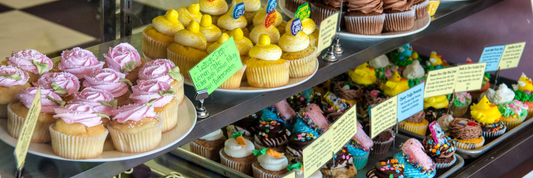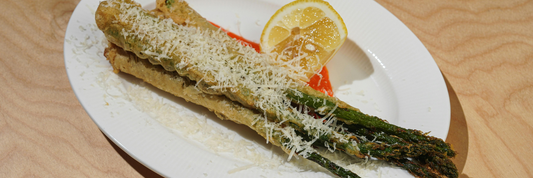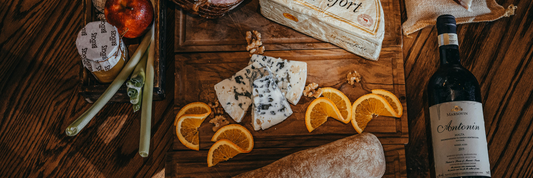In today’s competitive foodservice industry, the way ice cream is packaged and served plays a crucial role in both customer satisfaction and business efficiency.
Distinguishing between takeaway and dine-in ice cream cups helps ice cream parlors, cafés, and dessert shops choose the right packaging for delivery, takeout, and in-store dining. Each option has its unique design, material, and purpose that impacts convenience, cost, and sustainability.
-
What Is an Ice Cream Cup? A Beginner’s Guide
-
Ice Cream Cups with Lids – Yes or No?
- How to Choose the Right Size Ice Cream Cup
Takeaway Ice Cream Cups vs Dine-In Ice Cream Cups: What’s the Difference?

The core difference lies in functionality:
- Takeaway ice cream cups are designed for transport, ensuring ice cream stays fresh, intact, and spill-free during delivery or carry-out.
- Dine-in ice cream cups are made for immediate consumption within the shop, focusing on presentation and customer enjoyment rather than portability.
Design Features of Takeaway Ice Cream Cups
- Secure lids: Flat, dome, or vented lids prevent spills and leakage.
- Durable materials: PET plastic and heavy-duty paper help retain shape during transport.
- Visibility: Clear PET cups showcase the ice cream and toppings, appealing to customers even before tasting.
- Portability: Stackable designs make takeaway service faster and more efficient.
Design Features of Dine-In Ice Cream Cups
- Open-top design: No need for tight lids, allowing customers to enjoy their ice cream immediately.
- Focus on presentation: Premium paper or stylish printed cups enhance the dining experience.
- Convenience in disposal: Single-use paper cups are easy to discard after use, reducing cleanup time.

Standard Sizes for Takeaway and Dine-In Ice Cream Cups
Ice cream cups come in multiple sizes depending on serving needs:
- Small cups (3 oz – 5 oz): Ideal for kid’s servings, tastings, or sample sizes.
- Medium cups (8 oz – 12 oz): Standard for most dine-in and takeaway orders.
- Large cups (16 oz – 32 oz): Popular for sundaes, gelato mixes, or takeaway family packs.
Materials for Takeaway vs Dine-In Cups
- Takeaway Cups: Often made from PET plastic for transparency and durability, or thick coated paper with leak-resistant properties.
- Dine-In Cups: Typically crafted from premium paperboard, as they don’t require extended durability beyond the immediate eating experience.

Cost Considerations
- Takeaway ice cream cups: Slightly higher costs due to lids, stronger materials, and transport-friendly designs.
- Dine-in cups: More cost-effective since they do not require complex lids or extra durability.
Customer Experience: Convenience vs Presentation
- Takeaway customers value spill-proof lids, easy portability, and eco-friendly packaging.
- Dine-in customers expect a visually appealing presentation that enhances their in-store experience.
Sustainability and Eco-Friendly Options
Both takeaway and dine-in cups are shifting toward eco-friendly packaging solutions:
- Compostable paper ice cream cups with plant-based coatings.
- Biodegradable PET alternatives made from renewable resources.
- Reusable ice cream cups for dine-in service in eco-conscious cafés.
Why Ice Cream Cups Matter for Your Food Business

FAQs: Distinguishing Between Takeaway and Dine-In Ice Cream Cups
1. What is the difference between takeaway and dine-in ice cream cups?
Takeaway cups are designed for transport with lids, while dine-in cups are for immediate serving without lids.
2. Do takeaway ice cream cups always need lids?
Yes, lids prevent spills and help maintain freshness during transport.
3. What sizes are best for takeaway vs dine-in?
Takeaway cups usually range from 8 oz – 16 oz, while dine-in cups vary from 3 oz tastings to 12 oz servings.
4. Are PET cups better than paper cups for takeaway?
PET cups are more durable and showcase toppings clearly, but paper cups are more sustainable and eco-friendly.
5. Which type of cup is more eco-friendly?
Dine-in paper cups tend to be more eco-friendly, but compostable takeaway cups are also a sustainable option.
Conclusion
Distinguishing between takeaway and dine-in ice cream cups is essential for businesses aiming to deliver excellent customer service while managing costs and sustainability. Takeaway cups emphasize durability, portability, and spill-proof designs, while dine-in cups focus on presentation and ease of use. By choosing the right ice cream cup for each service model, businesses can improve customer satisfaction, reduce waste, and build a more eco-friendly brand image.




